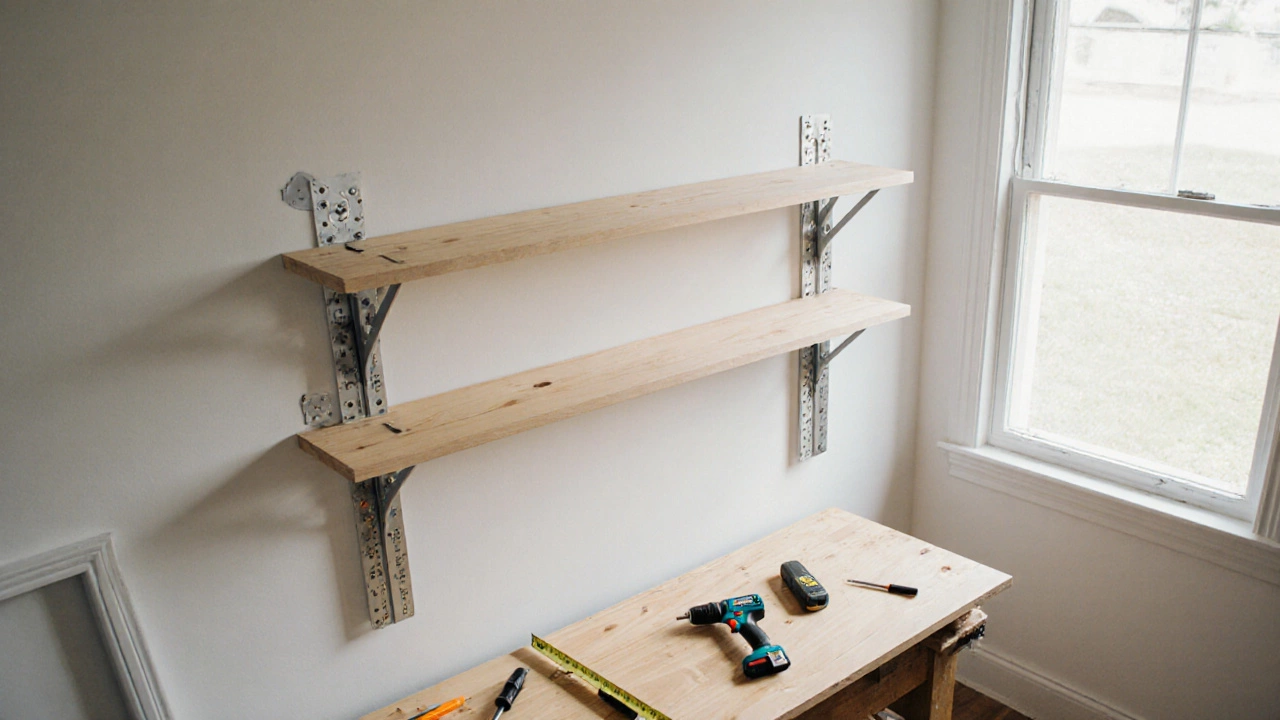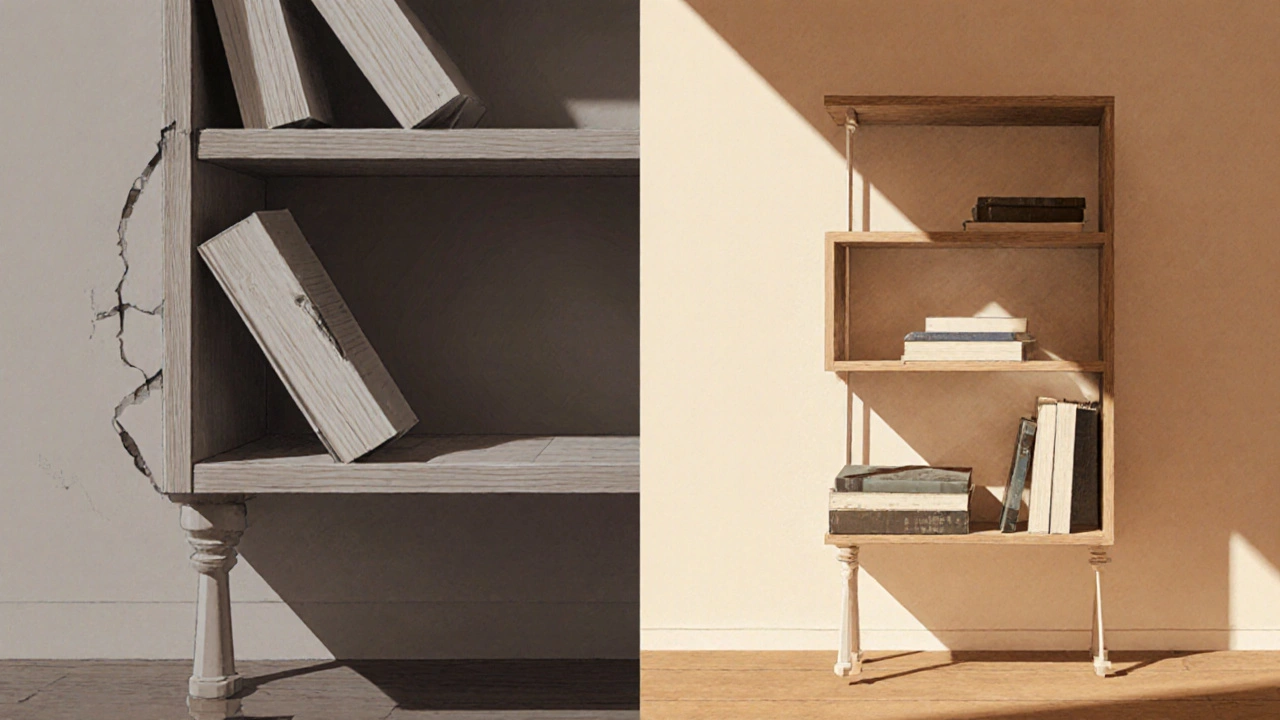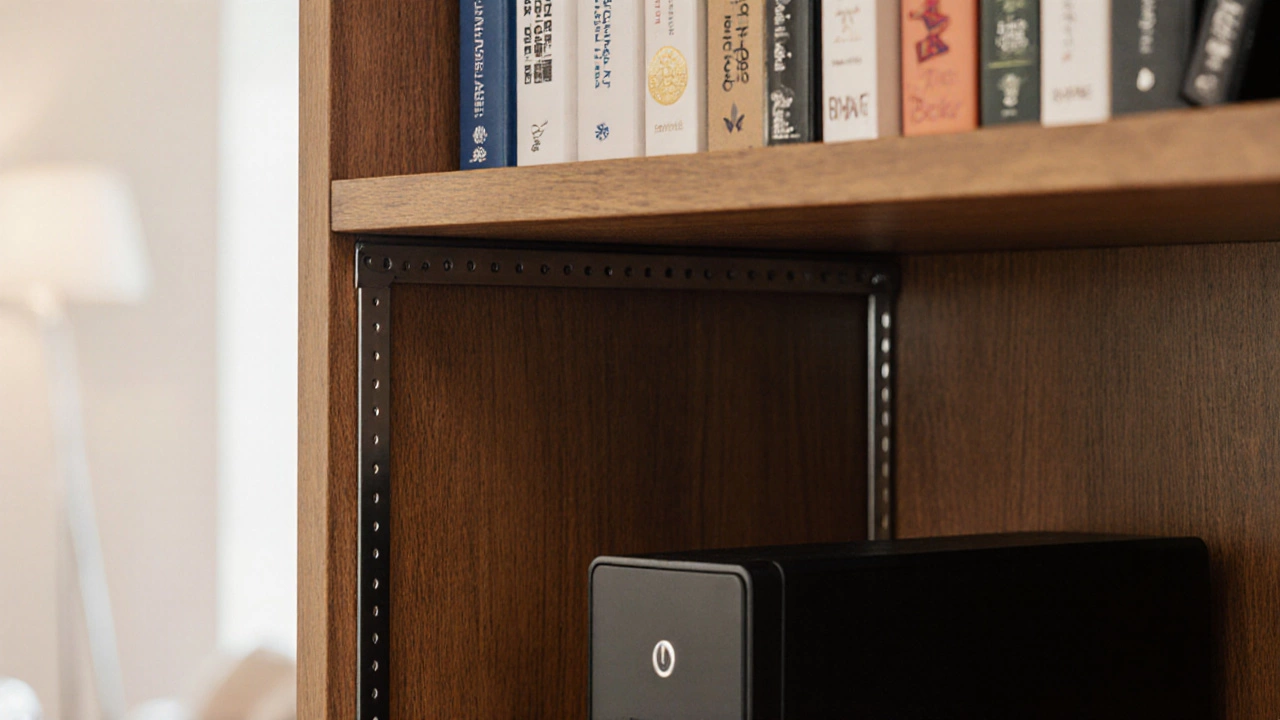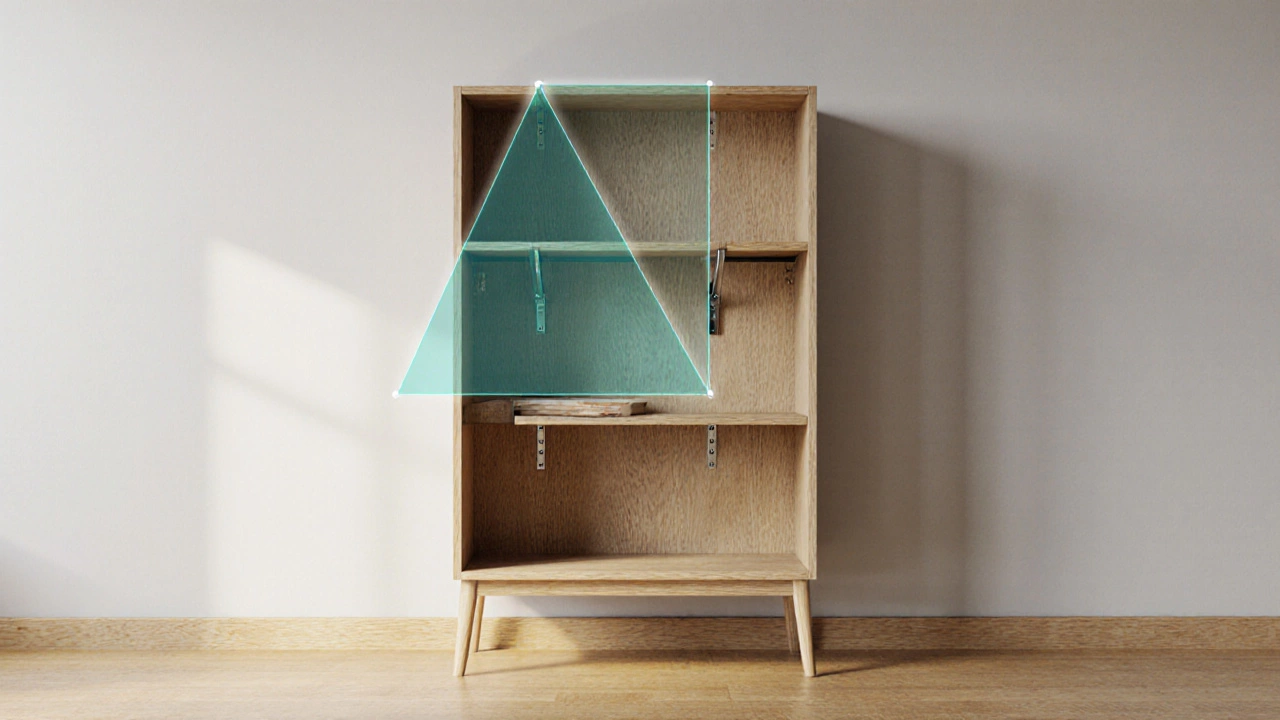Shelf Stability Calculator
Calculate Your Shelf Stability
Determine if your bookcase meets the Triangle Rule for stability based on your support points and load. The Triangle Rule requires three non-collinear support points to form a rigid triangle that distributes weight evenly.
Your Shelf Stability Assessment
Enter your shelf details and click Calculate to see stability results.
Recommendations
When a shelf sags or a bookcase tips over, the first thing you hear is that dreaded creak of metal or the sight of books tumbling. The culprit is usually a simple physics oversight: the triangle rule. Getting this rule right means your shelves stay level, your books stay put, and you avoid costly repairs.
What the Triangle Rule Actually Is
In furniture design, the Triangle Rule for Shelves is a stability principle that says a shelf or bookcase must be supported at three non‑collinear points to form a rigid triangle, preventing unwanted flex or rotation. Think of a triangle as the strongest shape you can build with straight lines; it never collapses under load because the forces are evenly distributed among its three corners.
Why Three Points Matter
The rule rests on two core physics ideas: Load Distribution the way weight spreads across a structure and Center of Gravity the point where the total weight of an object appears to act. When you support a shelf at three points that form a triangle, any weight placed on the shelf pushes down, but the triangle channels that force into the supports without letting the shelf twist.

Breaking Down the Three Support Points
- Wall Anchoring securing the top of a shelf or bookcase to studs behind the drywall - provides a fixed point that stops the unit from pulling away from the wall.
- Vertical Bracket a metal or wooden piece that holds the shelf from underneath - carries the bulk of the downward load.
- Floor Support legs or a base that rests on the floor, giving the piece an anchor point at ground level - completes the triangle and prevents side‑to‑side wobble.
If any of these points are missing or misaligned, the shelf behaves like a seesaw, and even a modest stack of books can cause a collapse.
Step‑by‑Step: Applying the Triangle Rule to a New Bookcase
- Identify the studs in the wall using a Stud Finder a handheld device that detects wood or metal framing behind drywall. Mark the centers of two studs that are at least 24 inches apart.
- Choose brackets that span the distance between those studs. A good rule of thumb is to use brackets at least 2 inches longer than the span to ensure a snug fit.
- Install the brackets on the wall, aligning each screw with the stud center. Use a level to verify the brackets are perfectly horizontal.
- Place the vertical support - either a solid side panel on a freestanding bookcase or a back panel that attaches to the brackets.
- Set the shelf on the bracket’s horizontal arm. Ensure the shelf’s Shelf Depth the distance from the wall to the front edge of the shelf does not exceed the bracket’s overhang; otherwise the load creates a lever effect that can pull the bracket away.
- Secure the bottom of the unit to the floor with Bracket metal L‑shaped supports that attach the base to the floor or rubber‑feet that prevent sliding.
- Test stability by gently pressing on the far edge of the shelf. If there is any noticeable give, tighten screws or add a third support point.
Following these steps creates a solid triangle: wall‑anchored top, bracket‑supported middle, floor‑based bottom.

Common Mistakes and How to Fix Them
- Skipping the wall anchoring. Relying only on brackets leaves the top free to tip. Solution: always screw into studs or use heavy‑duty toggle bolts.
- Using brackets that are too short. This reduces the triangle’s base, increasing the lever arm. Solution: add a Cantilever a projecting beam supported at only one end reinforcement or choose longer brackets.
- Placing heavy items far from the wall. The center of gravity shifts outward, stressing the bracket. Solution: keep heavy books near the back edge.
- Ignoring floor levelness. Uneven floors tilt the base point, breaking the triangle. Solution: shim the base or use adjustable feet.
Pro Tips for Maximizing Shelf Strength
- Use hardwood or plywood with a minimum 3/4‑inch thickness for the shelf surface; thinner boards flex more easily.
- Apply a thin layer of wood glue between the shelf and bracket before screwing; the adhesive helps distribute load across the contact area.
- Install a back panel made of 1/4‑inch hardboard; it ties the side panels together, turning the whole unit into a rectangular box that resists twisting.
- When storing very heavy items (like a desktop PC), add a dedicated Bracket reinforced metal support that spans the full width of the shelf directly under the load.

Comparison of Common Support Methods
| Support Method | Forms Triangle? | Max Load (lbs) | Installation Difficulty | Typical Cost |
|---|---|---|---|---|
| Wall Anchors + Brackets + Floor Legs | Yes | 250-400 | Medium | $30-$60 |
| Floating Shelf Brackets Only | No (only two points) | 80-150 | Easy | $20-$40 |
| Free‑standing Bookcase with Back Panel | Partial (back panel adds third point) | 150-250 | Easy | $50-$120 |
Quick Checklist Before You Load Your Shelves
- All three support points are securely fastened.
- Brackets are rated for the intended load.
- Heavy items are placed near the wall or back panel.
- Floor base is level and stable.
- Check that the shelf material is at least 3/4‑inch thick.
What exactly is the triangle rule for shelves?
It’s a stability principle that says a shelf must be supported at three non‑collinear points - typically the wall, a bracket, and the floor - to form a rigid triangle that distributes weight evenly.
Do I need a stud finder for every shelf?
If the shelf will hold more than a few books, anchoring into studs is best. For light decorative shelves, heavy‑duty toggle bolts can work, but studs give the most reliable third point.
Can I apply the triangle rule to floating shelves?
Floating shelves usually have only two attachment points, so they don’t meet the triangle rule. To make them safe, add a hidden wall brace or a rear support panel that creates the third point.
What are common signs that a shelf isn’t stable?
Slight wobbling when you press the edge, audible creaking, or visible sagging of the shelf board are all warnings that the load isn’t being shared properly across three points.
How much weight can a typical bracket support?
Most medium‑weight metal brackets are rated for 150-250 lb when properly anchored to studs. Heavy‑duty brackets can handle up to 400 lb.


Write a comment